Bibim Naengmyeon (Spicy Cold Noodles)
Naengmyeon refers to a beloved Korean spicy cold noodles made with buckwheat flour, served chilled. These chewy noodles served with bibim naengmyeon sauce make one of the most popular summer dishes in Korea. Discover the secret to preparing this refreshing summer favorite with ease using this easy recipe and step-by-step instructions.
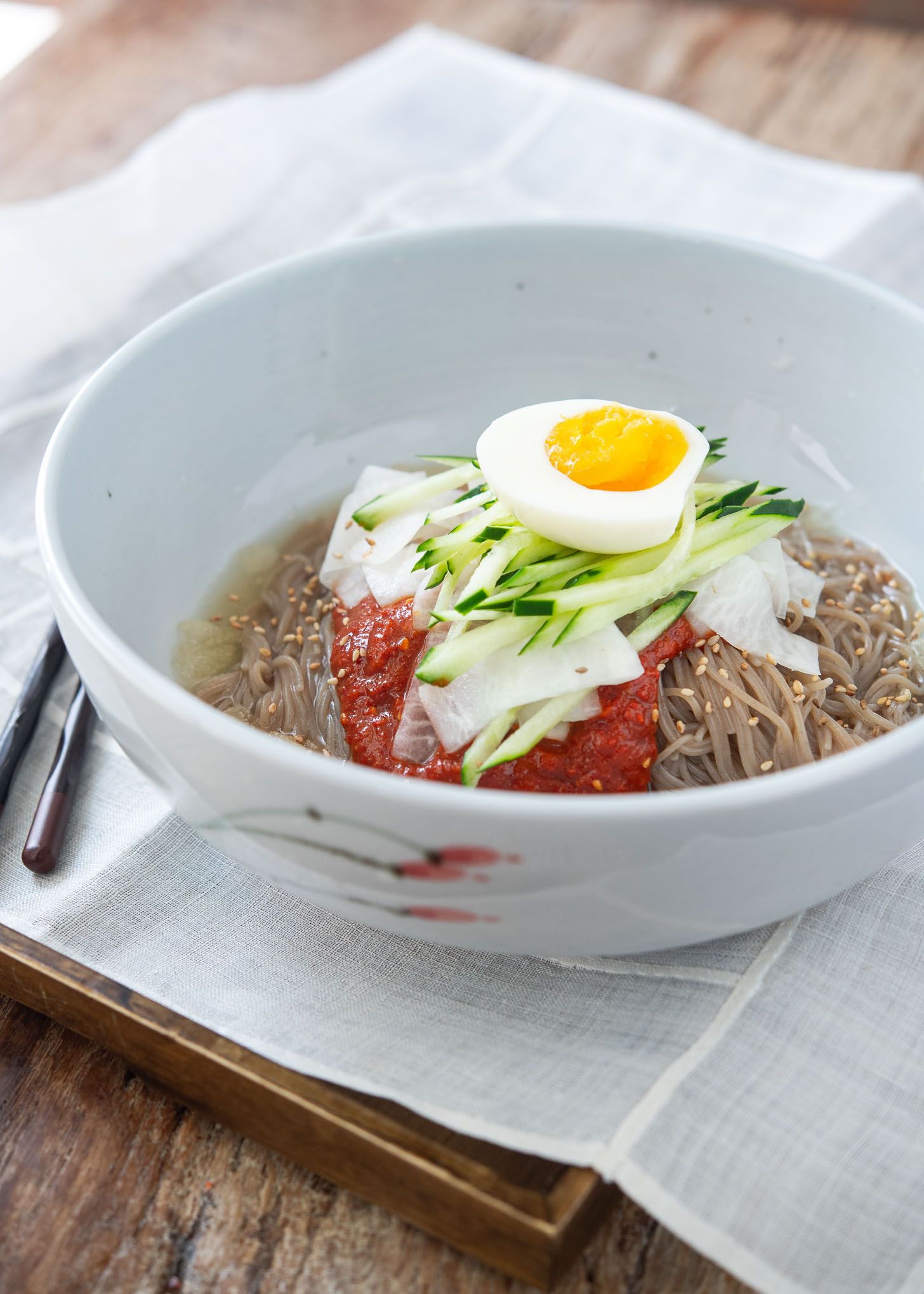
Growing up in a southern province of Korea, my culinary experiences were mostly filled with other types of cold noodles like bibim guksu or kongguksu.
Naengmyeon, known as Korean cold noodles, was originally from the northern regions, now part of North Korea. It wasn’t a prominent dish in my childhood memories.
However, as I grew older and developed a more refined palate, I couldn’t resist the allure of naengmyeon. These gourmet chewy noodles have captured the hearts of naengmyeon enthusiasts all over Korea, and I quickly became one of them.
The unique flavors and refreshing qualities of naengmyeon are truly captivating, making it an irresistible choice for noodle lovers like me.
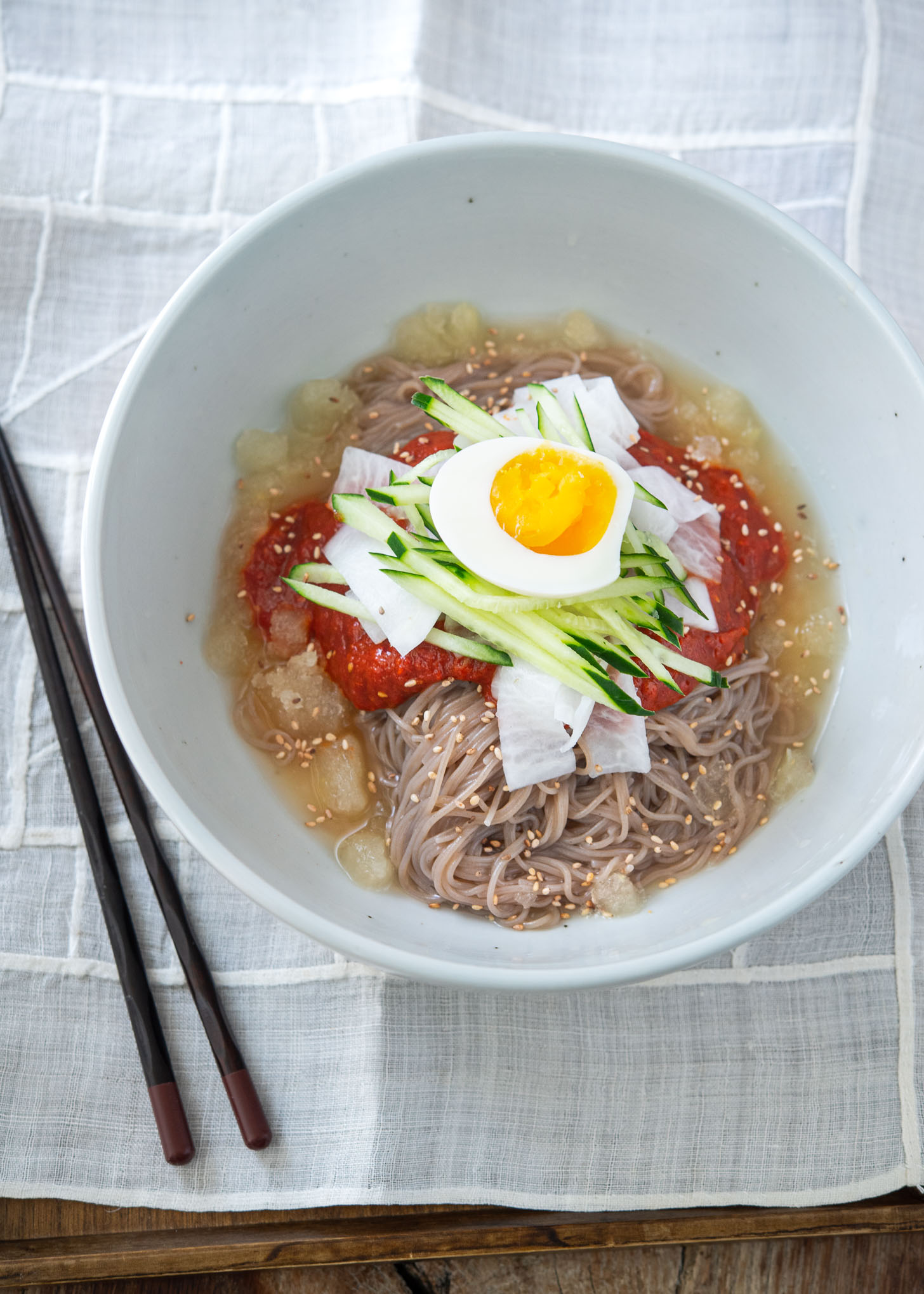
What is naengmyeon?
Naengmyeon is a popular type of cold noodles that originated in North Korea and has gained widespread popularity throughout the Korean peninsula, particularly during the summer season.
It features thin and chewy buckwheat noodles served in a chilled broth or with a spicy sauce, making it an ideal dish for cooling down during hot summer days.
This beloved Korean cold noodle dish is famous for its invigorating flavor and the satisfying texture of its noodles.
Notably, it can be divided into two distinct variations: bibim naengmyeon and mul naengmyeon, each with its own unique characteristics and culinary appeal.
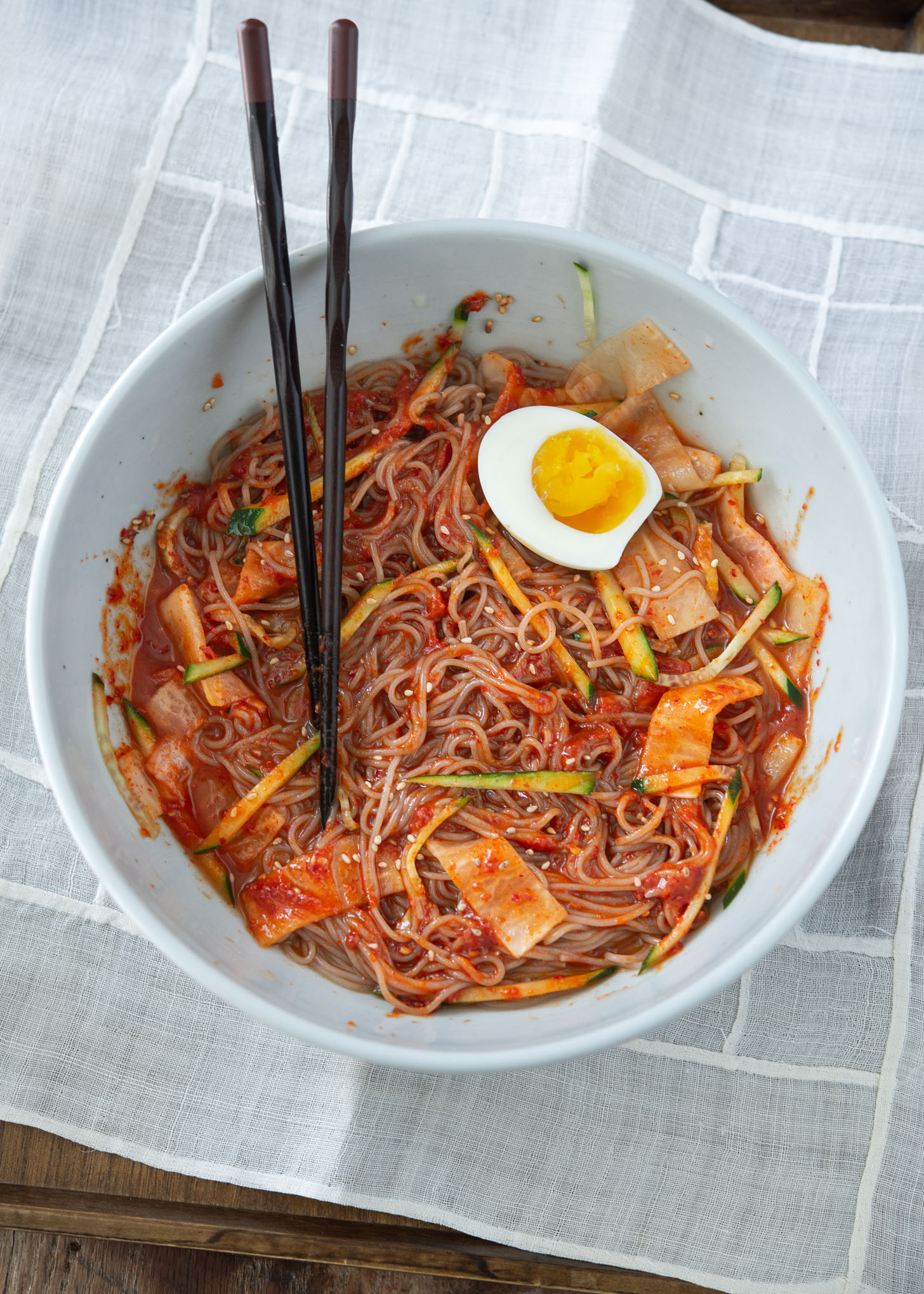
Bibim Naengmyoen vs Mul Naengmyeon
Bibim Naengmyeon
The specific origin of bibim naengmyeon is attributed to the region of Hamhung, the second-largest city in North Korea. Its key component is the tantalizing sauce made with gochugaru (Korean red pepper flakes), soy sauce, rice vinegar, sesame oil, and a touch of sugar.
This combination creates a harmonious blend of spicy, tangy, savory, and slightly sweet flavors that elevate the overall taste.
Similar to Bibimbap (Korean mixed rice bowl) or bibim guksu (Korean spicy cold noodles), the term “Bibim” often conveys the association with spiciness, although it is not always the case.
Fun fact about Korean dining experiences: In many Korean restaurants, after a Korean BBQ feast, you are often presented with a delightful choice to conclude your full-course meal: Bibim Naengmyeon, Doenjang Jjigae, or Kimchi Jjigae. Each choice a delicious way to conclude your dining experience.
Mul Naengmyeon
Mul naengmyeon, the traditional variation of naengmyeon, is believed to have originated in the northern regions of North Korea, particularly in Pyongyang, the capital city. Pyongyang-style mul naengmyeon is highly regarded for its delicate yet flavorful broth made from beef or radish water kimchi (dongchimi).
This version of naengmyeon has become iconic and is considered a representative dish of the region. Over time, mul naengmyeon gained popularity and recognition throughout the Korean peninsula, becoming a cherished culinary delight enjoyed by people across Korea.
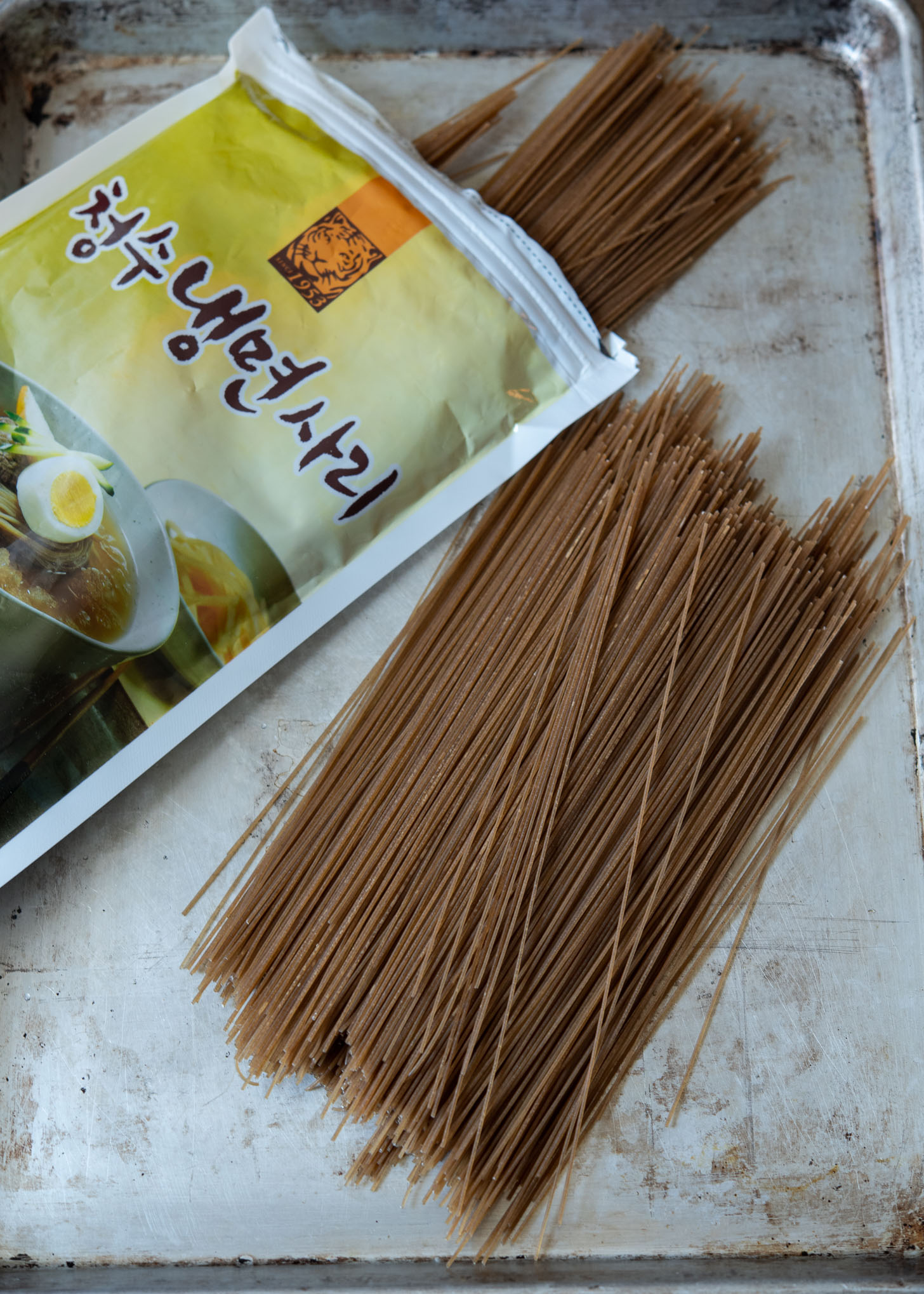
The noodles
At the heart of any naengmyeon dish, whether bibim or mul, are the unique noodles. Naengmyeon noodles are made primarily from buckwheat flour, which gives them their distinct texture and nutty flavor.
The noodles are typically long and thin, allowing them to absorb flavors and sauces effectively. As a result, every bite of naengmyeon delivers a satisfying chewiness that complements the accompanying ingredients and sauces.
Most store-bought naengmyeon noodles are conveniently pre-cut for easy serving. However, if your noodles come in bundles, you may need to use a pair of scissors to cut them just before serving.
This is a common practice seen in some naengmyeon restaurants, where the server cuts the noodles at your table.
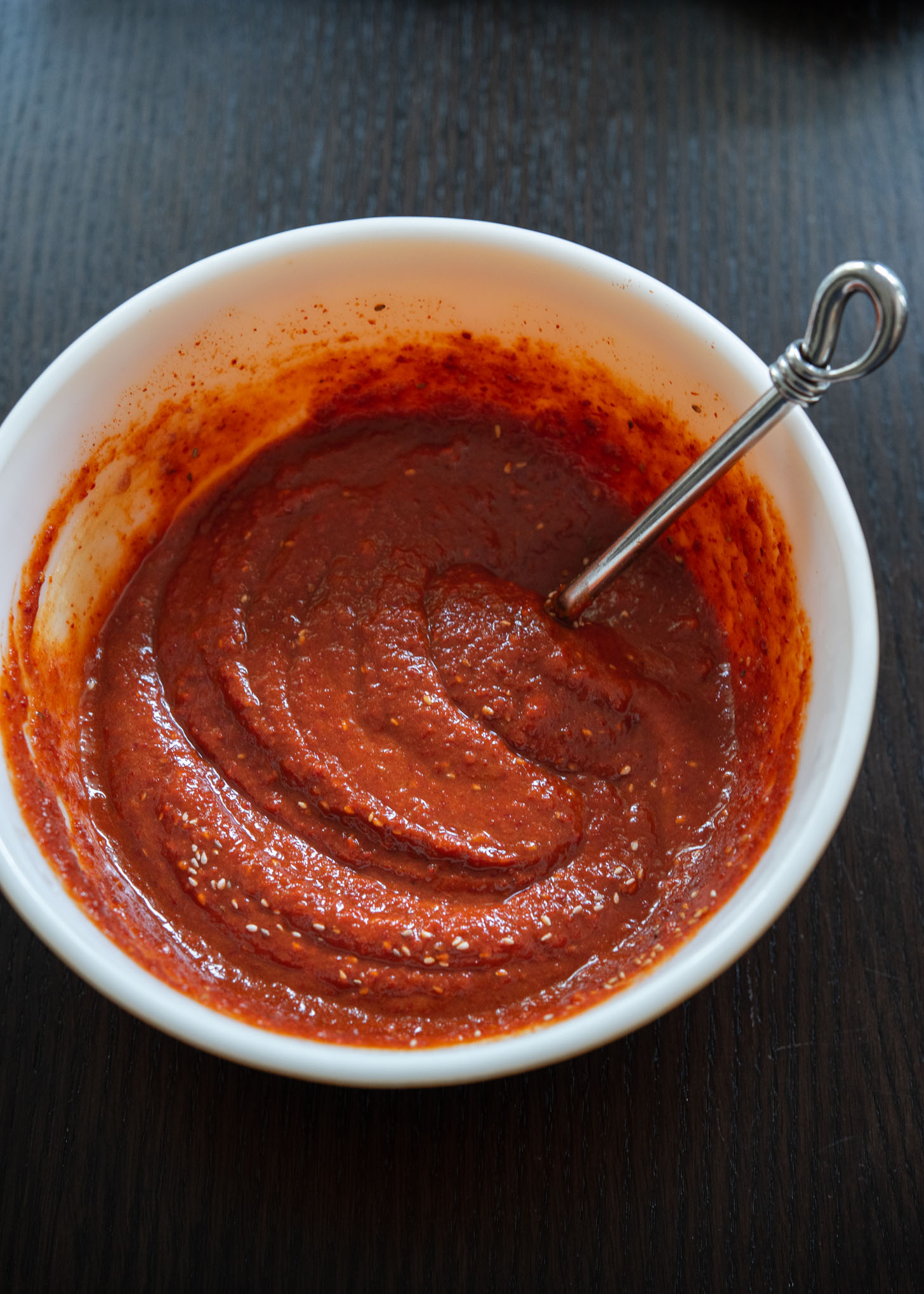
Bibim naengmyeon sauce
The sauce is the star of the show when it comes to Hamhung-style naengmyeon.
While some people use a gochujang-based sauce, the truly authentic taste of North Korean naengmyeon sauce is achieved with gochugaru (Korean red chili flakes) as the main ingredient.
Combined with soy sauce, vinegar, and other savory components, this sauce delivers a delightful flavor profile. To take the sauce to the next level, consider adding fresh fruits like apple and pineapple. They bring a gourmet touch and enhance the depth of the naengmyeon sauce.
I recommend preparing the sauce in advance and allowing it to chill in the fridge for at least 20 minutes, or even overnight. This allows the flavors to meld together, resulting in a more harmonious and delicious sauce.
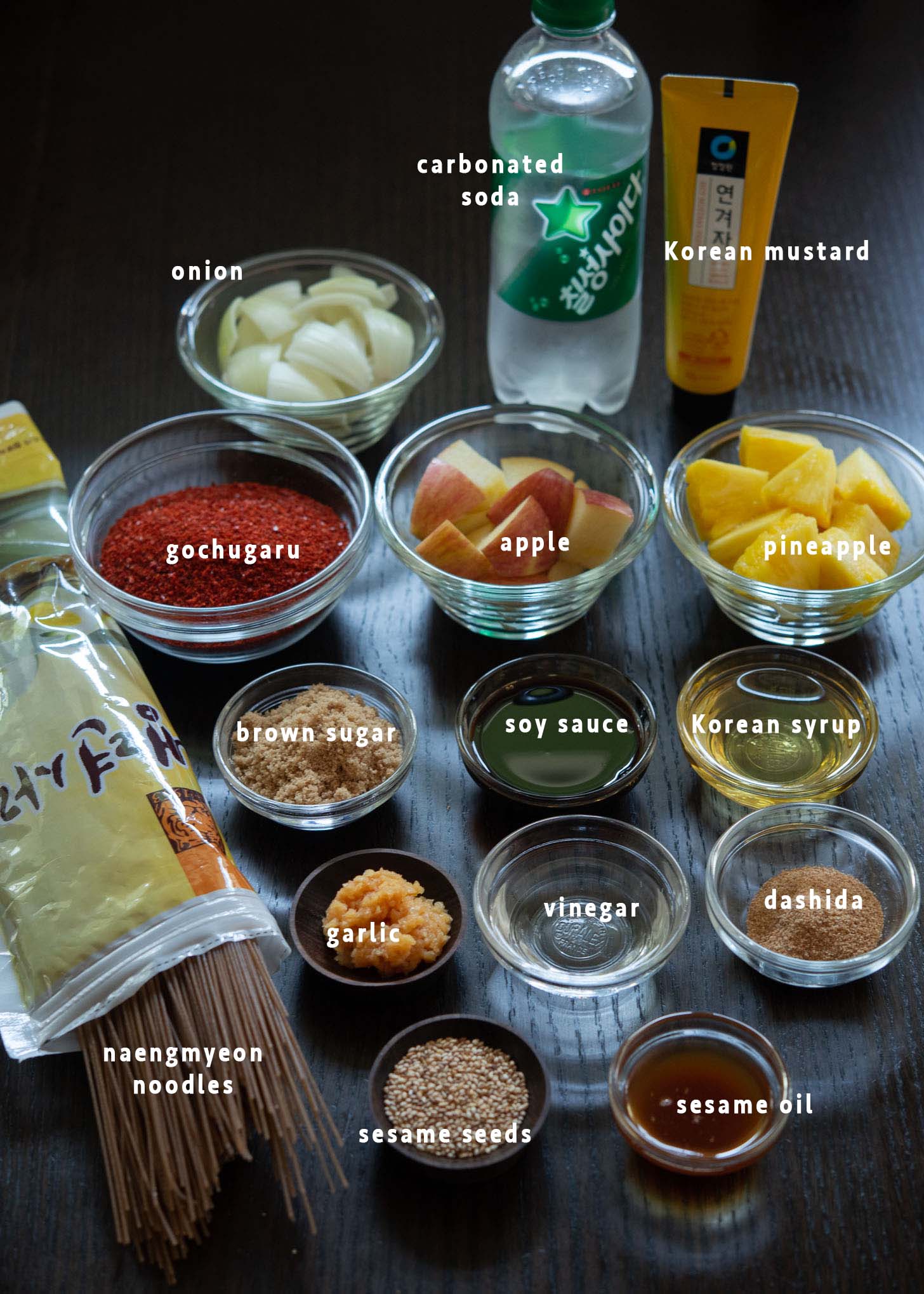
Recipe Ingredients
- Dried naengmyeon noodles: Utilize store-bought pre-cut noodles to save time.
- Korean radish: Thin slices for a crisp and refreshing crunch.
- Cucumber: To add a cool and crisp element.
- Korean pear or Asian pear (optional): Juicy and crispy fruits add a touch of sweetness.
- Hard or soft-boiled egg: Perfect for topping and adding protein.
- Roasted beef slices (optional): Thin slices of mild-flavored roasted beef work well, and using leftovers is a great idea.
For the sauce
- Soy sauce: Savory and umami taste.
- Onion and garlic: Adds a savory depth to the sauce.
- Apple and pineapple: Don’t miss out on these fruits as they add a fruity and refreshing note, enhancing the overall superior taste.
- White vinegar: Offers tanginess to balance the flavors.
- Light brown sugar: A touch of sweetness to harmonize the sauce.
- Korean corn syrup or honey: Sweetness and viscosity.
- Ginger paste: Subtle zing and aromatic flavor.
- Korean mustard (or substitute with dijon mustard): Adds a tangy and spicy kick.
- Sesame oil: Overall richness and nutty aroma.
- Toasted sesame seeds: Crunch and nutty flavor.
Recipe Tips and Tricks
Optional naengmyeon Beef Broth:
While it is optional, some people prefer to enhance their naengmyeon experience by adding a small amount of mul-naengmyeon broth at the bottom of the noodles.
This helps to coat the noodles with the sauce more effectively. While making authentic naengmyeon broth requires time and effort, here’s a quick and easy alternative recipe that you can try.
- Instead of the traditional broth, you can create a flavorful substitute using Korean beef bouillon powder called “sogogi dashida.”
- Mix it with water, a lemon lime-flavored carbonated drink such as Sprite, and a touch of Korean mustard. Whisk them together and freeze the mixture for 1-2 hours until a thin layer of ice forms.
- This clever trick, employed by many restaurants, can provide a similar effect to the authentic broth and you can enjoy your naengmyeon experience without much effort.
How to make bibim naengmyeon
Optional quick beef broth:
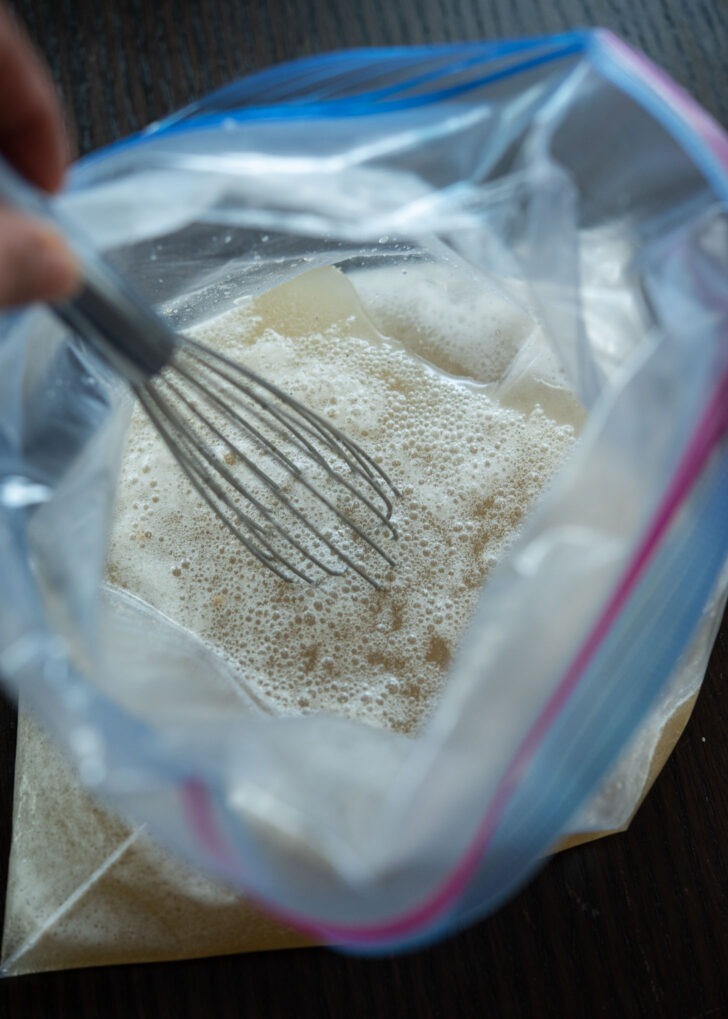
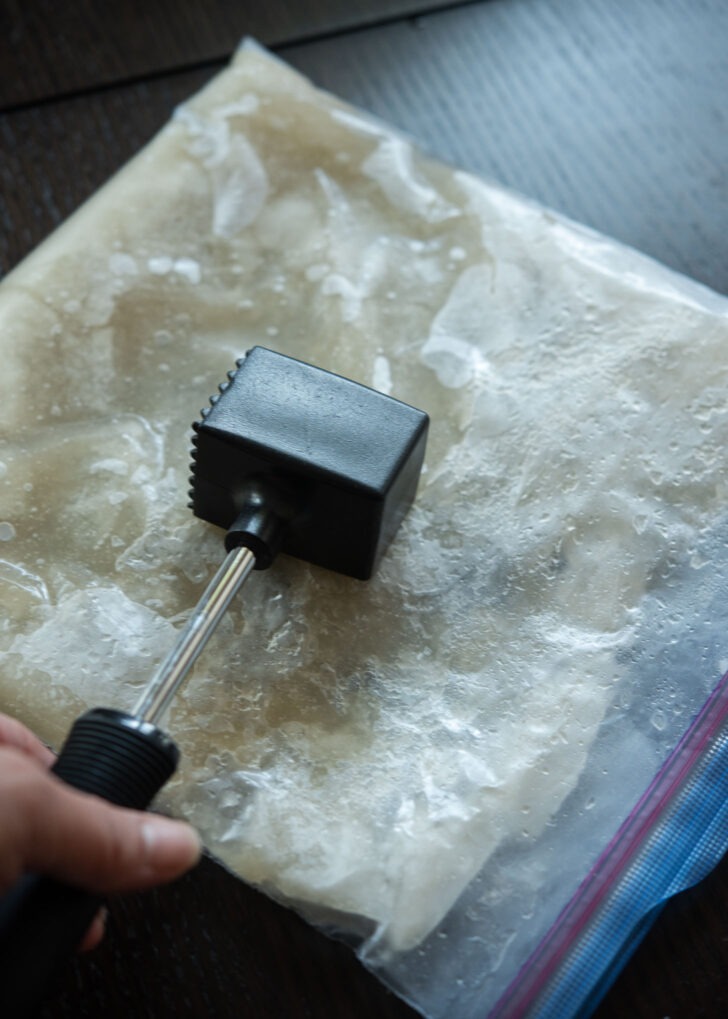
- In a zip-top bag, whisk together water, carbonated drink, beef bouillon powder, and mustard.
- Seal the bag tightly and lay it flat in the freezer for 1-2 hours until it becomes partially frozen.
- Before serving, crush the broth with a meat hammer.
Make bibim naengmyeon sauce
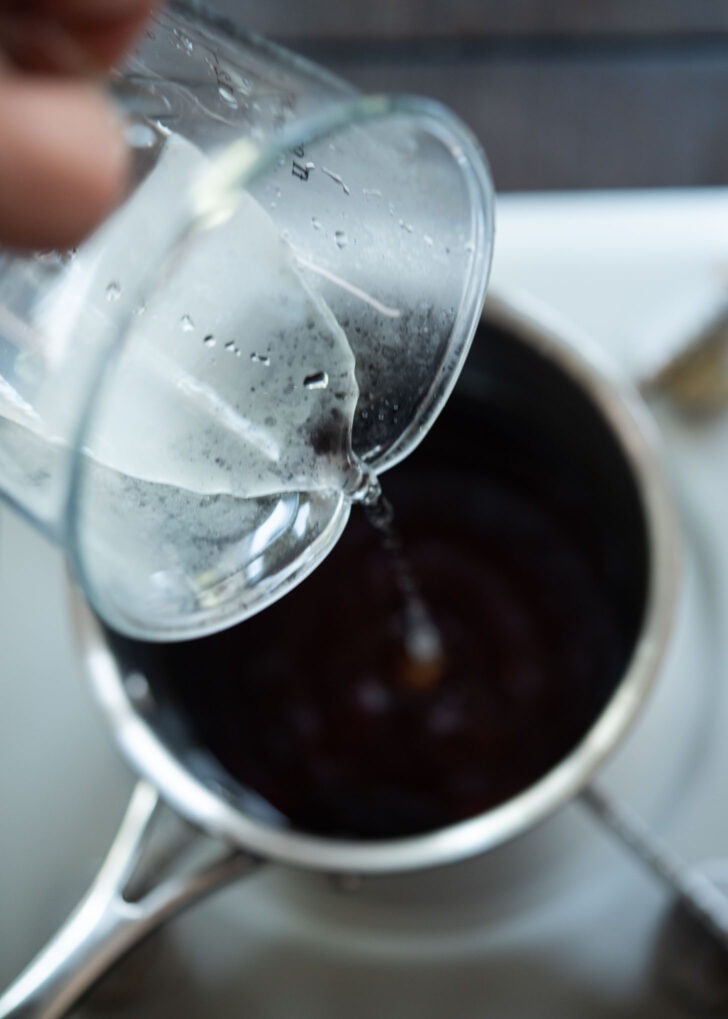
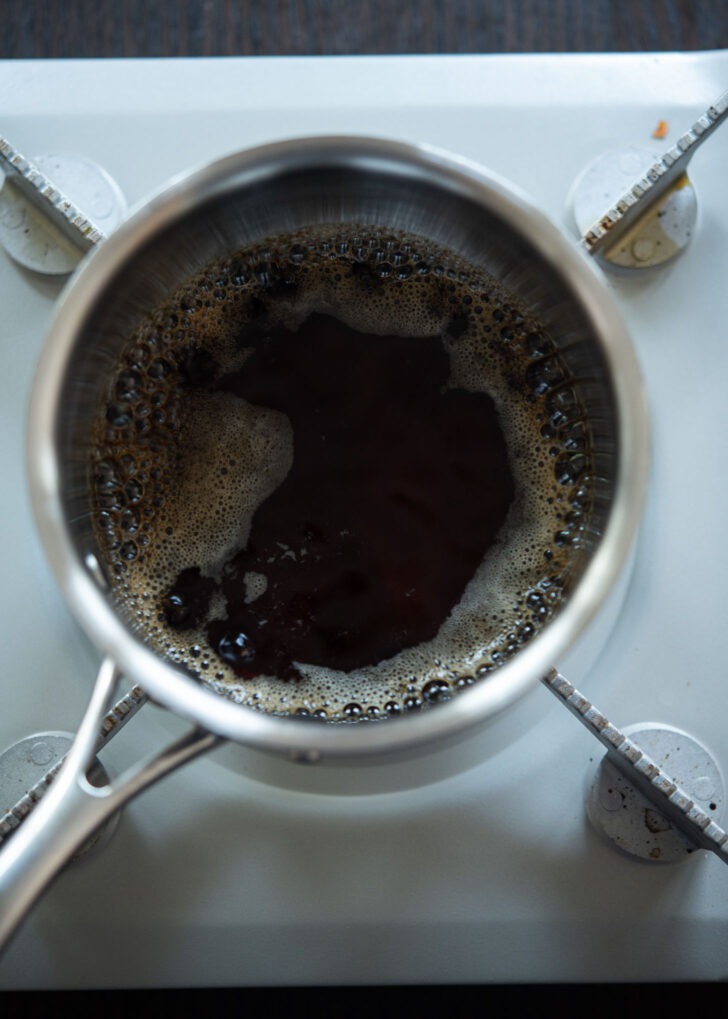
- In a small pot, combine soy sauce and water. Bring it to a full boil over high heat, then remove from the heat and let it cool.
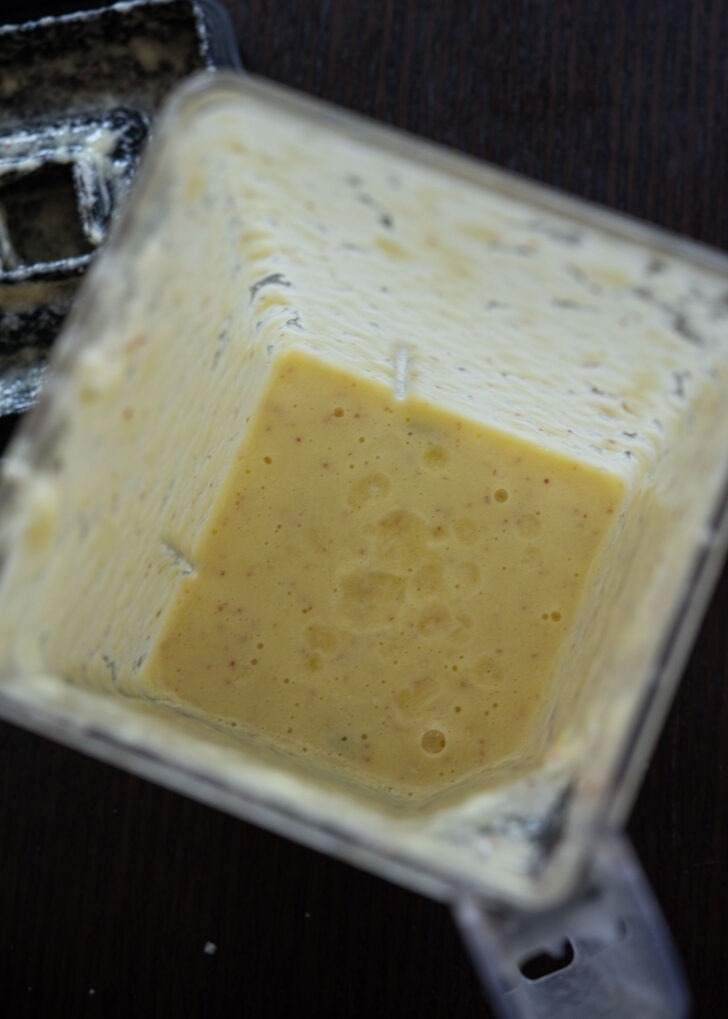
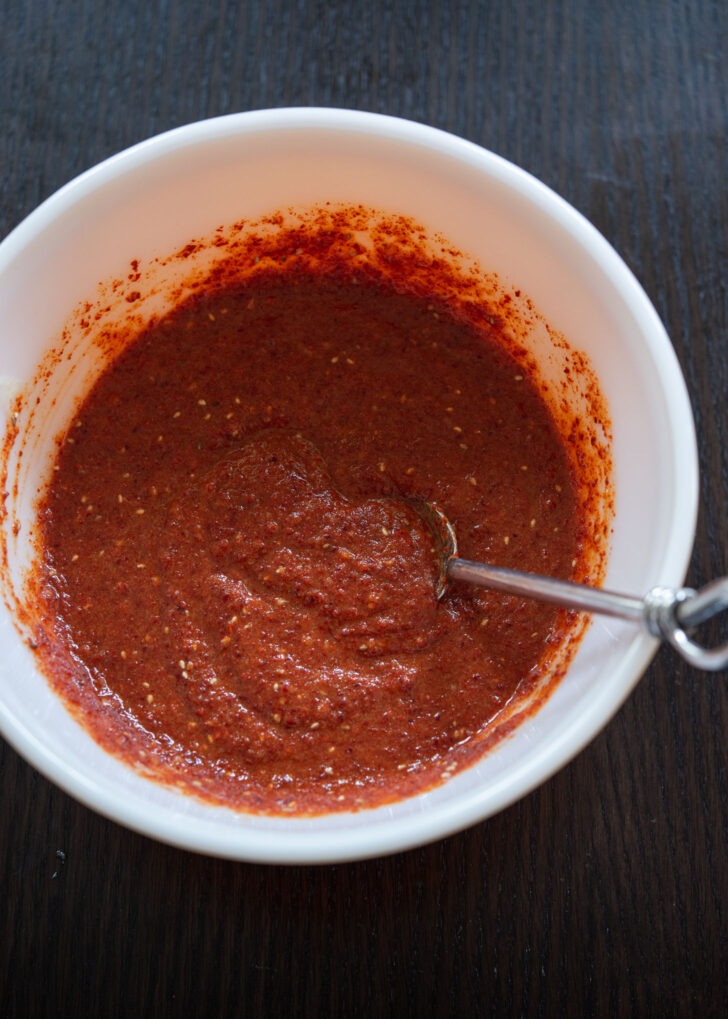
- In a blender, combine onion, garlic, apple, pineapple, and 3 tablespoons of water. Puree until smooth.
- Transfer the puree into a mixing bowl. Add the soy sauce mixture, Korean chili flakes, brown sugar, Korean corn syrup or honey, ginger paste, mustard, sesame oil, and sesame seeds. Mix well.
- Let the sauce chill in the refrigerator for at least 20 minutes or overnight.
Naengmyeon toppings
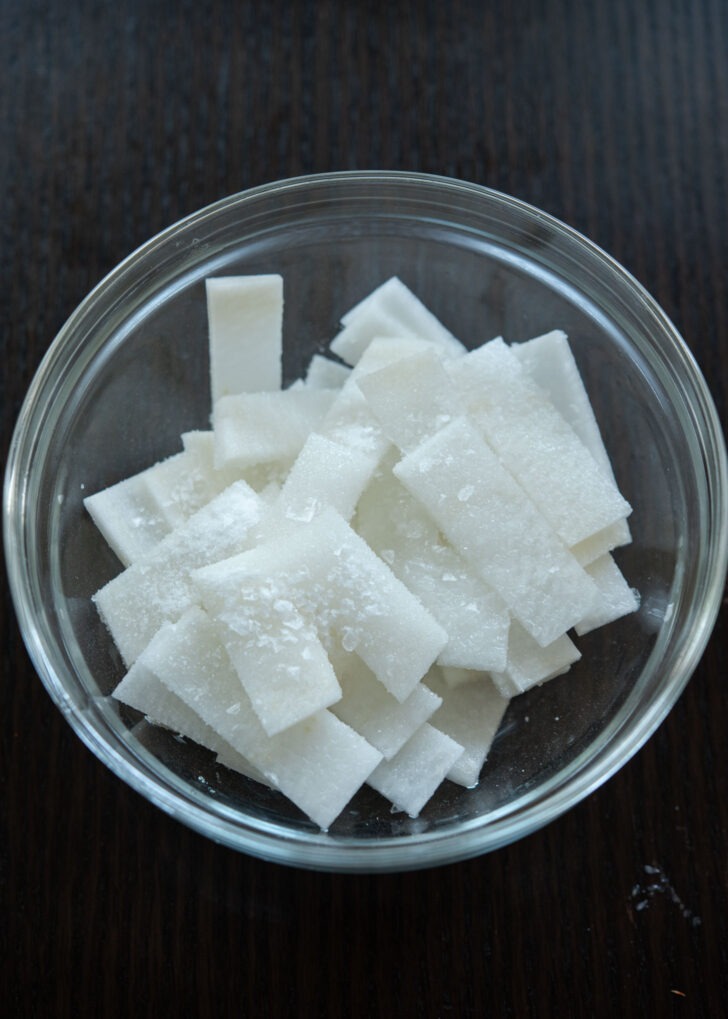
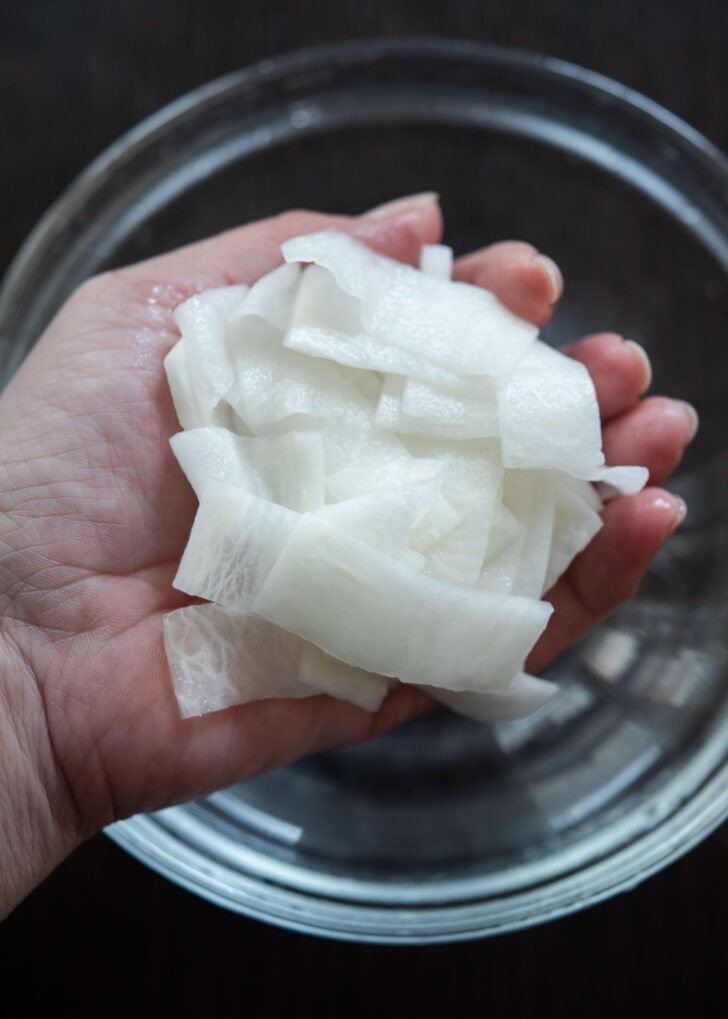
- For the radish pickles, combine thinly sliced radish with salt, sugar, and vinegar in a mixing bowl. Let it sit for 20 minutes.
- Rinse the radish slices once and firmly squeeze out excess moisture.
To Cook naengmyeon noodles
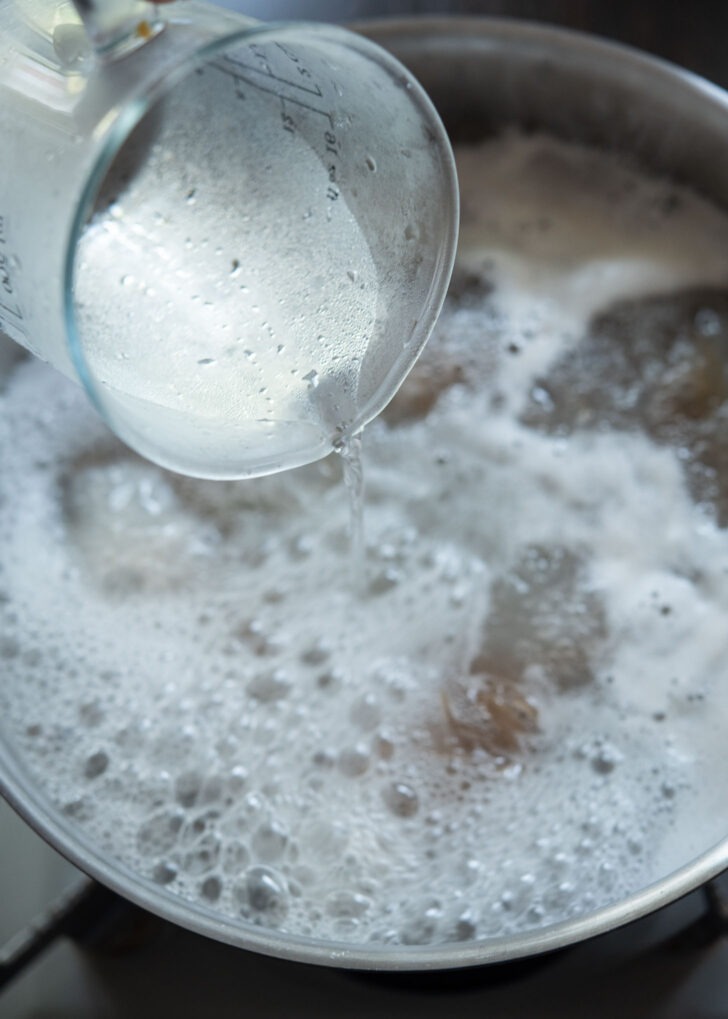
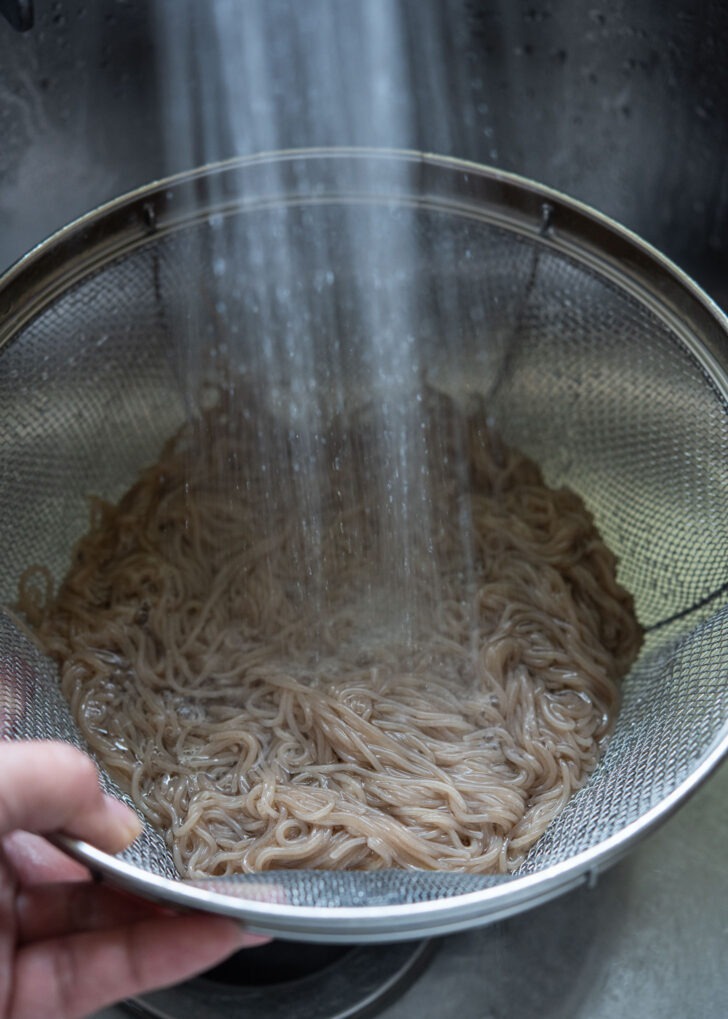
- Bring a pot of water to a boil. Add the noodles and stir.
- When the water returns to a boil, add a shot of cold water. Repeat this process until the noodles are soft and chewy according to the package directions.
- Drain the noodles in a colander and rinse them under running cold water. Drain again.
To assemble
- If using, add 1/2 cup of the icy beef broth to the bottom of the serving bowl.
- Place the cooked noodles in the bowl and add about 6-8 tablespoons of the bibim naengmyeon sauce on top.
- Garnish the dish with pickled radish, cucumber, Korean pear (if desired), and a hard or soft-boiled egg.
- Sprinkle toasted sesame seeds over the dish according to your preference.
- Enjoy your homemade bibim naengmyeon!
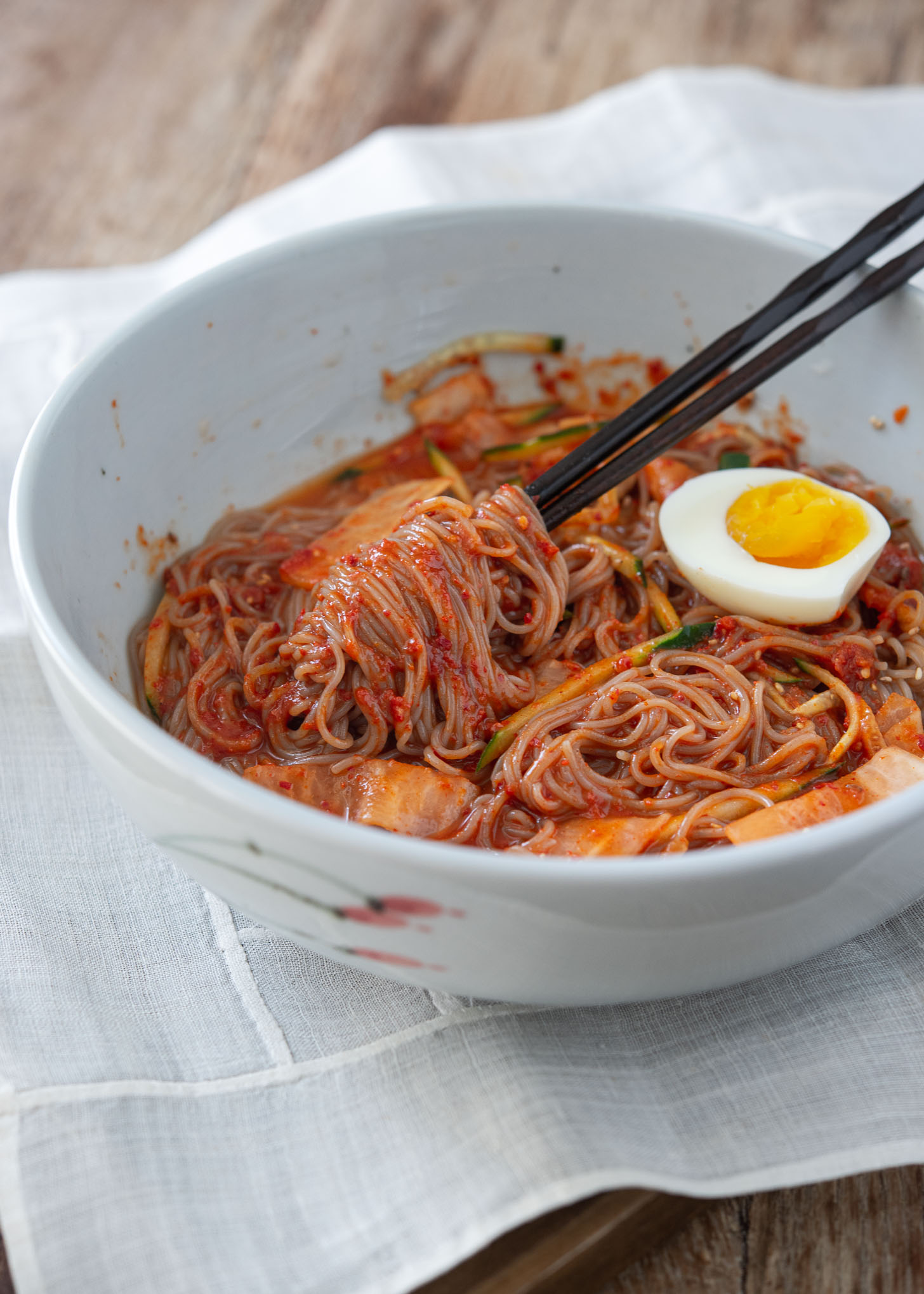
Serving Suggestions
If you prefer shorter noodles for easy serving, cut through the noodles with kitchen scissors a couple of times before serving. This will make them easier to mix and eat.
Customize the flavors to your liking by adding more mustard and vinegar to suit your taste preferences as you serve. Feel free to adjust the levels of tanginess and spiciness according to your desired intensity.
More noodle recipes
Summer is a great season for noodles. Here are a few of my favorite noodles recipes that I enjoy during the hot season.
- Easy Japchae Recipe (Korean Glass Noodles)
- 5-Minute Kimchi Ramen
- Hong Kong Style Cantonese Pan-Fried Noodles
- Quick Yaki Udon (Stir-Fried Udon Noodles)
- 20-Minute Beef Gochujang Noodles
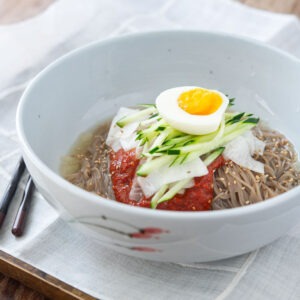
Bibim Naengmyeon (Spicy Cold Noodles)
Ingredients
- 8 servings Korean naengmyeon noodles
- 1 Asian cucumber, sliced to thin matchsticks
- 1/2 Korean pear or Asian pear, thinly sliced, optional
- 4 hard boiled eggs, sliced in half
Optional beef broth
- 4 cup water
- 1 cup lemon lime flavored carbonated soda
- 2 tbsp Korean beef bouillon powder (sogogi dashida)
- 4 tsp Korean mustard, or 2 tbsp dijon mustard
Quick radish pickles
- 1/2 Korean radish or daikon radish, cut into 1/2-inch wide, 2-inch long thin strips
- 1 tbsp salt
- 2 tbsp sugar
- 2 tbsp vinegar
Bibim naengmyeon sauce
- 1/4 cup soy sauce
- 1/2 cup water
- 1/2 apple, peeled and diced
- 1/2 medium onion, peeled and diced
- 5 oz (150 g) fresh pineapple, or 3 rings of canned pineapple
- 1 clove garlic
- 3 tbsp water , or pineapple juice
- 1 cup Korean chili flakes (gochugaru)
- 1/4 cup white vinegar, or more
- 1/3 cup brown sugar
- 4 tbsp Korean syrup, or 3 tbsp honey
- 2 tbsp sesame oil
- 1 1/2 tsp ginger puree, or 1/2 tsp ginger powder
- 1 tsp Korean mustard , or 2 tsp dijon mustard
- 1 tsp salt
- 1 tbsp toasted sesame seeds
Instructions
To make optional beef broth
- In a zip-top bag, whisk together water, carbonated drink, beef bouillon powder, and mustard. Seal the bag tightly and lay it flat in the freezer for 1-2 hours until it becomes partially frozen.
To make naengmyeon sauce
- In a small pot, combine soy sauce and water. Bring it to a full boil over high heat, then remove from the heat and let it cool.
- In a blender, combine onion, garlic, apple, pineapple, and 3 tablespoons of water. Puree until smooth.
- Transfer the puree into a mixing bowl. Add the soy sauce mixture, Korean chili flakes, brown sugar, Korean corn syrup or honey, ginger paste, mustard, sesame oil, and sesame seeds. Mix well. Let the sauce chill in the refrigerator for at least 20 minutes or overnight.
To make radish pickles
- Combine thinly sliced radish with salt, sugar, and vinegar in a mixing bowl. Let it sit for 20 minutes. Rinse the radish slices once and firmly squeeze out excess moisture. Set aside.
To cook noodles
- Bring a pot of water to a boil. Add the noodles and stir. When the water returns to a boil, add a shot of cold water. Repeat this process until the noodles are soft and chewy according to the package directions. Drain the noodles in a colander and rinse them under running cold water. Drain again.
To assemble bibim naengmyeon
- If using naengmyeon broth, crush the partially frozen broth with a meat hammer. Add 1/2 cup of the icy broth to the bottom of the serving bowl.
- Place the cooked noodles in the bowl and add about 6-8 tablespoons of the bibim naengmyeon sauce on top. Garnish the dish with pickled radish, cucumber, Korean pear (if desired), and a hard or soft-boiled egg. Sprinkle toasted sesame seeds over the dish according to your preference. Enjoy your homemade bibim naengmyeon!

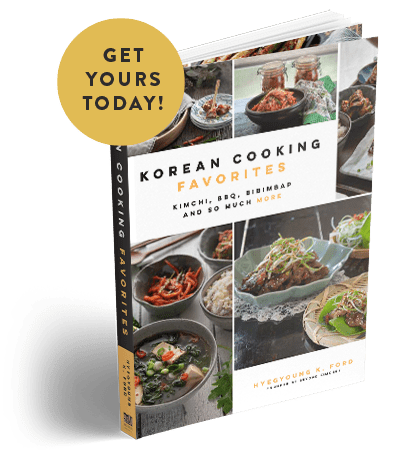
Hope this is acceptable, to ask: I use Gojuchang in many recipes. Because it is in the fridge it is difficult to mix with, e.g. cucumbers. . Is there a recommended way to liquify or soften Gojuchang? Thanks.
Pour a small amount of Sprite, about 2-3 tablespoons, directly into a 1lb gochujang container and let it sit on the counter for 30 minutes. After that, stir to blend, loosening the paste. Add more Sprite if necessary. Hope this tip is helpful!
I’m excited to try this recipe, but I was just wondering what the reason is behind boiling the soy sauce and water together before adding it to the sauce?
Boiling soy sauce can help to intensify the flavor and get rid of any possible unwanted odors. However, this step is optional and can be skipped if preferred.
This was really good, I loved the heat. But now I’ve got two cups.of the sauce left over, any suggestions for what to do with it?
Use to sauce up any types of noodles – rice noodles, wheat noodles, vermicelli, etc. You can even toss with ramen noodles (without the seasoning powder), too. Top with some sliced cucumber and a hard boiled egg, and you have a simple noodle meal in no time since you have the sauce ready.
Loved the recipe! My fiancé wants the cold ice soup broth to mix with it. Would you mind sharing the recipe for that as well? I’m having trouble finding a recipe he likes it paired with.
Hi Holly,
I tried this wonderful recipe yesterday and it was delicious, like all of your recipes I cooked so far.
Now I’ve got a question about the soba noodles. When I opened the package I found a couple of sachets containing maybe 3-4 tablespoons of a liquid of light orange color. As all the descriptions are in Korean I have no idea how to use it. Could it be used as an additional sauce to your spicy goodness? Or is it a helper for the lazy cook and thought to be used as the only sauce?
And I got another question. I was finally able to find some frozen Eomuk / 어묵. Here, too, they added some spice. It is a small sachet with a reddish powder. Could it be, that I need to dissolve it in water to make some spicy sauce? Or is it to sprinkle over the Eomuk, because I found no numbers indicating an amount of liquid to use?
Vague questions, I know, but I hope you’ll have a way to help me.
Thank you!
Bee
Hi Bee
The sachet might be the sauce that comes with the noodles. But I am curious why it is light orange in color. Usually complimentary sauce in the package for this noodle is usually deep in red color. Have you checked the expiration date?
The reddish powder might be the mild chili powder that you can sprinkle directly over your 어묵soup. Taste it fist to see if it is edible to make sure, though. 🙂
Glad to hear that you got some Korean cooking going on! Happy eating!
Yes, I checked the date and it is fine. If I decifer the looking like handwritten letters correctly the name of the liquid should be 냉면 용 육수.
I will try the powder by sprinkling it on the Eomuk and you’ll here from my self-experiment in case I survive it, OK?
Thank you!
Oops, that should be *decipher of course. (Sometimes I’m just too lazy or too distracted by my kids to check the dictionary and see the obvious mistakes too late.)
Had this for supper and it was delicious! Great recipe.
Hey! Your recipe looks absolutely yummy~ I will try making it very soon!
The sauce must be made one or two days before being eaten right? Should we keep it in the fridge after making it?
Thanks!
Yes, keep the sauce in the fridge.
How do you get the noodles to be chewy? I’ve tried doing as you said with rinsing in ice water but it never comes out as chewy as when I get them at restaurant. Do I let it sit in the fridge? Also the noodles tend to clump up. How do I keep it from sticking together?
Can you use gochu jang as well for the sauce?
You can, but I highly recommend to use the chili powder instead. Paste will bring different texture to the sauce.
한국전통음식을 소개하면서 소바라고 설명하는 것은 부적절하다고 봅니다. 냉면은 이북지방 고유 음식이고 일본소바와 얼마나 관련이 있는지는 의문입니다.
영문판 위키에서 냉면을 검색해봐도 소바라는 단어는 보이지 않습니다. 삭제 또는 정정 부탁드립니다.
의견 감사합니다. 그렇군요, 소바는 일본말이라 냉면으로 표현하기는 적절하지않군요. 정정하겠습니다.
This looks wonderful! Lovely pics, as always, and a great recipe. I’ll definitely be trying this!
That sauce sounds amazing! I’m definitely going to make it once I get my hands on some pineapple! I love the chewy texture of the noodles.
wow… i bet that sauce is nuthin like the little packets you get with the prepacked Naengmyeon you get at the k.market 🙂 i gotta give it a try!
thanks
This looks fantastic! I can’t wait to try it! I love Beyond Kimchee!! Keep up the great work!!
Welcome back! Sounds like you had a great vacation. But no matter how much fun a vacation is, I, too, always enjoy returning home. Particularly if I have a dish like this to look forward to! What a great recipe. I love pasta and I love spicy, so this sounds wonderful. Great flavors, and pretty easy to make – what could be better?
I am visiting where I grew up right now.
.Funny how it used to be home and great place to visit, but Florida is home now. I love your step by step your photos.are great!..I so want to try this…I might have to ease up on the heat a bit though.
Welcome home! I love this recipe — so unusual and exotic, but still somehow comfort food. And pineapple is a surprise ingredient! I can’t wait to try this.
Thanks Ann. Pineapple adds nice flavor to the sauce without tasting any. Hope you can give this a try.
What stunning pictures. Cold noodles are all I eat nowadays. Too hot to have anything else! Thanks for the bibim naengmyun recipe. I always eat the packaged ones, but now I know.
Mabel
Thanks Mabel. I guarantee this spicy Naengmyeon will beat your summer heat. Tastes far much better than the package kind.
I love this! I was never a big fan of nengmyon when I lived in Korea but now I love it! Funny how my appetite changes overtime! This looks fabulous.
Believe me, my appetite changes every day. Naengmyeon is great dish to turn up the lost appetite.
I totally agree with the sentiment that home’s the best. Thanks for posting all the step by step photos, korean food is one of my favourite, this recipe looks so delicious, time to visit my favourite korean restaurant soon. Thanks for sharing 🙂
Yes, Korean food is my favorite too. Thanks for stopping by!
I tried this once and simply loved the texture of the noodle and the ultra spicy sauce 🙂 Certainly a great dish for a place like Malaysia where its summer all year round. Thanks for the recipe Holly! I hope you had great vacation.
Hi swan, good to hear from you. Of course I believe any Malaysian can handle the spicy Korean sauce. Just perfect match!